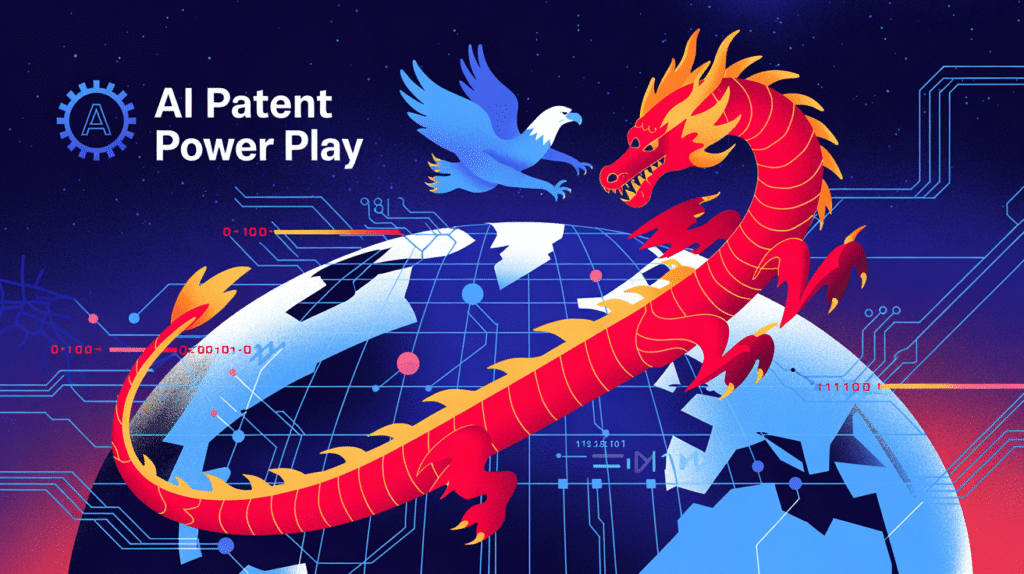AI Patent Power Play – Will Fragmented Regulation Hold the U.S. Back?
While China pushes forward with a unified national AI strategy, the United States faces a fragmented regulatory landscape, where individual states—like California, New York, and Texas—are introducing their own rules on data privacy, algorithmic accountability, and AI safety. This patchwork approach may encourage localized innovation, but it also creates regulatory confusion and risks slowing down national-scale coordination.
The current debate in Washington appears more focused on blocking state-level overreach than on advancing a meaningful, federal framework. In my opinion, this hesitation is a mistake. We don’t need another “big, beautiful” bill stuck in gridlock—we need clear, practical standards rooted in transparency and self-responsibility. A strong national policy would empower ethical innovation while identifying and eliminating bad actors and fraud, helping to build public trust in AI.
If left unresolved, the U.S.’s decentralized approach could seriously undermine its global competitiveness, even as it continues to lead in foundational technologies. Meanwhile, China’s centralized strategy allows it to move swiftly on both policy and patent power—solidifying its position as a global AI superpower.
AI Patent Power Play: China Outpaces the U.S. in the Global AI Innovation Race

As artificial intelligence reshapes industries and economies, the world’s two leading powers—China and the United States—are locked in a fierce race for AI dominance. But when it comes to AI patent filings, the scoreboard tells a compelling story: China is pulling far ahead, especially in generative AI.
The Numbers Tell the Story
🇨🇳 China’s AI Filing Surge
Between 2014 and 2023, China filed more than 38,000 generative AI patents, outpacing the United States by more than sixfold. According to recent data from intellectual property watchdogs and academic studies:
China accounts for over 70% of global AI patent filings.
In 2024 alone, China’s AI patent filings surpassed 188,000, with estimates nearing 300,000 across all categories.
The country’s lead stems not just from volume, but from aggressive state-backed strategies prioritizing AI research and development.
🇺🇸 United States’ Steady Growth
The U.S. remains the second-largest AI patent hub, but the gap is widening. Key 2024 figures include:
51,487 new generative AI patent applications in 2024, a 56% increase year-over-year.
The U.S. holds approximately 18% of global AI filings, with notable contributions from Silicon Valley, Boston, and Seattle-based innovators.
Major players like OpenAI, Google DeepMind, IBM, and Microsoft are leading U.S. filings, often emphasizing high-impact and high-citation research.
Quality vs. Quantity
While China dominates in volume, the U.S. holds its ground in impact and citation quality. U.S. patents are often more frequently cited in international filings, suggesting deeper influence in foundational AI models and infrastructure.
However, China is quickly closing this quality gap with improved research standards and broader collaboration with academia and industry. Universities such as Tsinghua and companies like Baidu, Alibaba, Tencent, and Huawei have established world-class AI labs.
Breakdown by Category
| AI Subfield | China (2024 Est.) | U.S. (2024 Est.) |
|---|---|---|
| Generative AI | 38,000+ (2014–23) | 6,276 (2014–23) |
| Natural Language AI | High volume | Moderate |
| Computer Vision | Very high | High |
| Robotics & Automation | Leading | Lagging |
What’s Driving China’s Edge?
Centralized Government Policy: The Chinese government’s five-year plans put AI at the center of national development.
Patent Incentives: China offers subsidies and local grants for filing patents, even regionally.
Domestic AI Boom: With over 4,000 AI startups and support from giants like Tencent and Alibaba, the internal demand is enormous.
Strategic IP Expansion: Chinese firms file aggressively not just in China, but globally via the PCT (Patent Cooperation Treaty) system.
What This Means for the Future
The AI race isn’t just about science—it’s about strategic control over future technology, defense systems, digital infrastructure, and economic power. China’s aggressive patent strategy reflects its ambition to become the world’s AI superpower by 2030.
Meanwhile, the U.S. must navigate a complex ecosystem of private enterprise, academic research, and decentralized policy-making. The Biden administration has increased AI investments, but regulatory clarity and workforce development lag behind.
The battle for AI supremacy is not only technical—it’s geopolitical. Patents are more than paperwork; they’re blueprints for global leadership. As China sprints ahead in filings, the U.S. must rethink how it balances innovation freedom with strategic national investment.
You might enjoy listening to AI World Deep Dive Podcast:
https://theworldfinancialforum.com/participate/
Source link